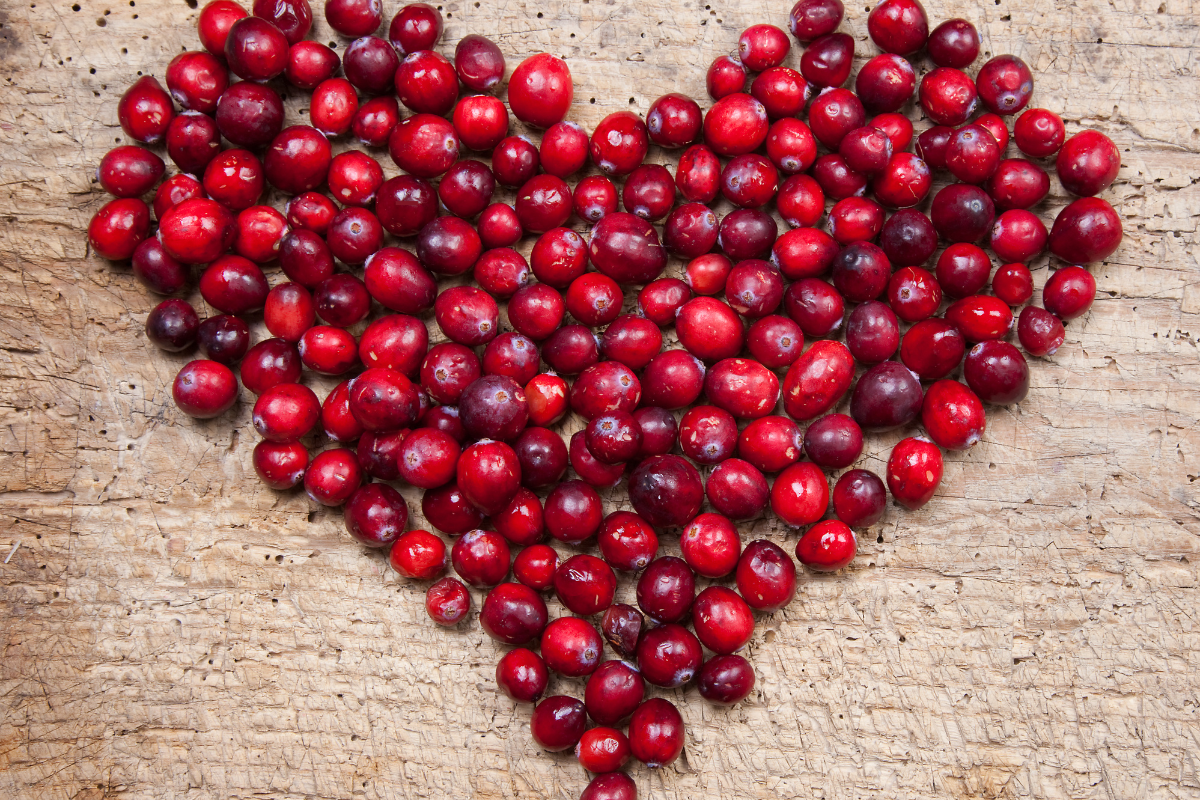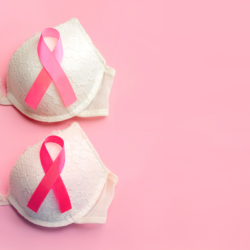The cranberry is a small red fruit with many health benefits. Used for centuries by Amerindians to prevent infections, it is now recognised for its antioxidant and anti-inflammatory properties.
But did you know that cranberries could also play a role in preventing and treating cancer? Thanks to its richness in polyphenols, particularly flavonoids and proanthocyanidins, it is thought to have the capacity to act on several mechanisms involved in the development of tumours.
In this article, we will explore in detail the effects of cranberry polyphenols on cancer cells, based on the latest scientific studies.
Understanding cancer
During their life cycle, cells divide. They pass on their genetic information to two new daughter cells and then die. However, genetic abnormalities can occur, disrupting the way certain cells function.
Under normal circumstances, mechanisms such as the cell cycle andapoptosis (programmed cell death) regulate cells, balancing cell production and destruction. If a cell is unable to correct its genetic errors, they accumulate as it divides. This increases the risk of cancer.
What is cancer?
Living organisms, whether plants or animals, are made up of fundamental elements called cells. Each cell contains genes that control its function and characteristics. Normally, cells follow a precise life cycle: they are born, perform their function and then die naturally in a process called apoptosis. Cancer is a disease characterised by the uncontrolled proliferation of abnormal cells.
However, certain genetic mutations can disrupt this mechanism, leading to excessive cell multiplication and the formation of malignant tumours. These cells can invade neighbouring tissues and, in some cases, spread to other parts of the body via the bloodstream or lymphatic system, forming metastases.
Cancer refers to all diseases caused by the uncontrolled growth of abnormal cells. These cells can form tumours. They are also capable of invading neighbouring tissues and spreading to other parts of the body via blood or lymph vessels. These secondary tumours are known as metastases. These metastases are responsible for the majority of cancer-related deaths. Although some cancers can be treated successfully, others are more aggressive and can recur. In these cases, regular monitoring is required. Early detection remains crucial to improving the chances of recovery.
Risk factors and types of cancer
Several factors increase the risk of developing cancer:
- Genetic factors: certain hereditary mutations increase the risk of cancer.
- Environmental factors: exposure to carcinogenic substances (tobacco, pollution, pesticides) plays an important role.
- Diet and lifestyle: an unbalanced diet, rich in sugars and processed fats, as well as a lack of physical activity, favour the development of cancer.
The cancers most closely studied in connection with cranberry polyphenols are colon, prostate, breast and lung cancers.
Cranberries: an exceptional source of polyphenols
To better understand cranberry’s impact on health, it is essential to examine its specific properties in detail. Among these, there is growing interest in its potential role in the prevention and treatment of cancer. Thanks to its high polyphenol content, cranberries could play a key role in combating the development of cancer cells.
Origin and composition of cranberries
The cranberry(Vaccinium macrocarpon) is a shrub of the Ericaceae family, mainly grown in North America. The cranberry is an evergreen shrub. It grows to less than 30 cm in height, with creeping branches that can reach 80 cm. Bumblebees pollinate its small pink flowers, while its bright red berries are packed with bioactive compounds. They are rich in antioxidants and beneficial nutrients.
Here’s the main composition of the cranberry:
- 85% water: a hydrating, low-calorie fruit.
- Flavonoids and proanthocyanidins (PAC): polyphenols with powerful antioxidant effects.
- Vitamin C: essential for the immune system.
- Organic acids: including benzoic acid, which contributes to the natural preservation of the fruit. But also citric, malic and ascorbic acids.
General properties of the cranberry
As well as its protective effect against urinary tract infections, cranberry is recognised for its benefits on :
- The cardiovascular system: reduction in bad cholesterol (LDL) and increase in good cholesterol (HDL).
- Chronic inflammation: reduction in inflammatory markers.
- The intestinal microbiota: prebiotic effect promoting good digestive balance.
But what particularly interests us is its potential role in the prevention and treatment of cancer.
Cranberry polyphenols and their anti-cancer effects
These PACs, type A, play a key role. They prevent bacteria, particularly Escherichia coli, from adhering to the walls of the urinary tract. In this way, they help prevent urinary tract infections.
Mechanisms of action of polyphenols against cancer
Cranberries may have anti-cancer properties, according to a study conducted by researchers at the University of Massachusetts. The results, published in The Global Source for Science News, show that cranberries contain compounds capable of selectively eliminating tumour cells in the colon. The researchers treated mice with colon cancer with three types of cranberry extract: a complete extract, one containing only polyphenols and another without polyphenols. After 20 weeks, the mice treated with the full extract showed a 50% reduction in the number of tumours, a reduction in their size, and a reduction in inflammatory markers.
Cranberry polyphenols act on several mechanisms involved in tumour formation:
- Antioxidant effect: they reduce oxidative stress, a factor that promotes cancer mutations.
- Inhibition of cell proliferation: they block the uncontrolled division of cancer cells.
- Induction of apoptosis: they promote the programmed death of tumour cells (particularly in colon and prostate cancer)
- Reduced inflammation: they reduce inflammatory markers, which are involved in the development of cancer.
In fact, proanthocyanidins and flavonols, the phytochemical components of cranberries, trigger the release of cytochrome-C by mitochondria, leading to the destruction of tumour cells. They are also thought to have an impact on genes associated with cell survival, such as those controlling the production of anti-apoptotic proteins like caspase-8 and FLIP.
Scientific studies on the anti-cancer effects of cranberries
Research has shown that cranberry extract can reduce the size of colon tumours in mice by 50% after 20 weeks of treatment.
Other studies have shown that :
- Proanthocyanidins induce apoptosis in colon and prostate cancer cells.
- Polyphenols increase the effectiveness of radiotherapy by reducing inflammation in prostate cancer patients.
- Consumption of cranberry juice may limit the growth of breast and lung tumour cells.
Research into cranberries shows promising potential as a supplement in the prevention and treatment of certain cancers. Their richness in polyphenols and antioxidants could play an important role in the fight against tumours. However, further studies are still needed to confirm these effects in humans.
Consumption and recommendations for optimum preventive effect
To reap the full benefits of cranberries, it’s important to know how best to consume them. Whether in the form of juice, dried fruit or supplements, each option has its own specific benefits. However, certain precautions need to be taken, not least because of possible drug interactions. Here’s what you need to know to consume it safely.
How should cranberries be eaten?
To benefit from its anti-cancer properties, here are the best ways to include cranberries in your diet:
- Cranberry juice: choose juice with no added sugar.
- Dried fruit: eat in moderation because of its sugar content.
- Food supplements: available in capsule or concentrated extract form.
Precautions and drug interactions with cranberry
Although cranberry is beneficial, certain precautions should be taken:
- Risk of interaction with anticoagulants: cranberries may increase the effects of warfarin, leading to a risk of haemorrhage.
- Caution in the event of kidney stones: its oxalate content could aggravate the problem.
- Beware of sweetened juices: they may contain high levels of sugar, cancelling out the fruit’s benefits.
Conclusion:
Cranberry polyphenols, in particular flavonoids and proanthocyanidins, show real potential in the prevention and treatment of cancer. Thanks to their antioxidant, anti-inflammatory and apoptotic properties, they could play a key role in the fight against cancer cells. However, although the studies are promising, it is essential to wait for further research before considering the cranberry as a treatment for cancer. In the meantime, incorporating this fruit into a balanced diet can be good for your health.
FAQ – Frequently asked questions
1. Can cranberries really cure cancer?
No, cranberries do not cure cancer, but their polyphenols may help slow the progression of certain tumours.
2. How much cranberry should I eat for it to have a beneficial effect?
We recommend consuming around 250 ml of pure cranberry juice or a handful of dried berries a day.
3. Can cranberry supplements be taken as a preventive measure?
Yes, but it is advisable to consult a doctor, especially if you are taking medication.
4. Is commercial cranberry juice effective?
No. Only pure juice with no added sugar retains the fruit’s beneficial properties.
5. Are there any contraindications to consuming cranberries?
Yes, particularly for people taking anticoagulants or prone to kidney stones.
Source:
- https://www.msdmanuals.com/fr/accueil/sujets-particuliers/compléments-alimentaires-et-vitamines/canneberge
- https://www.sante-et-nutrition.com/la-canneberge-ou-cranberry/
- https://www.irbms.com/fiches-aliments-cranberry/





